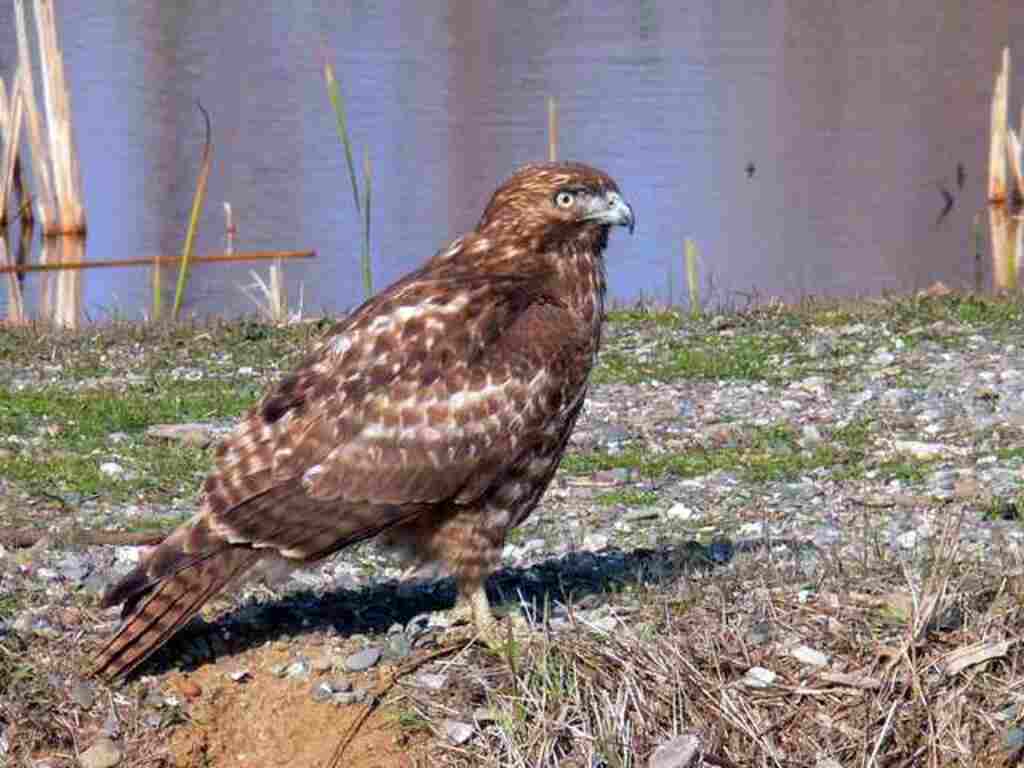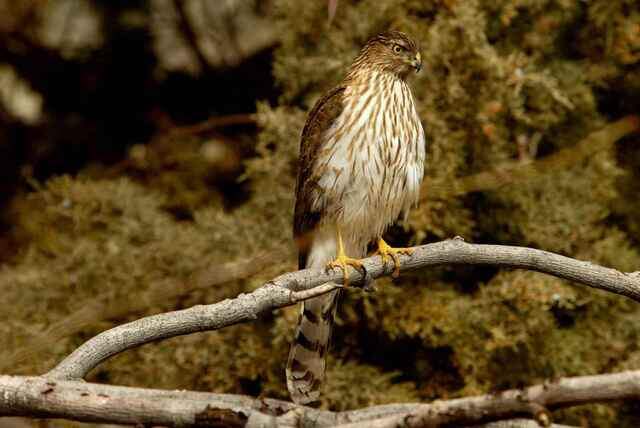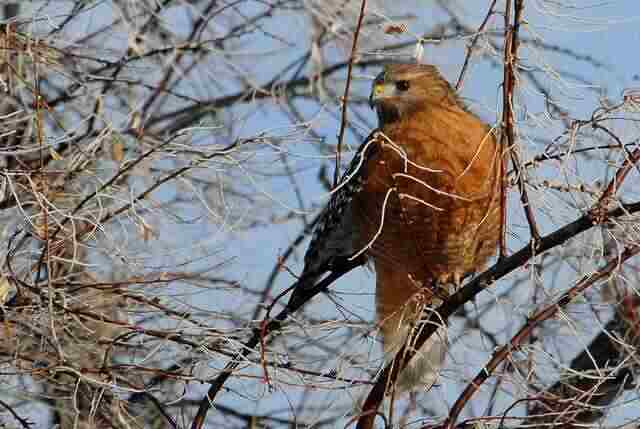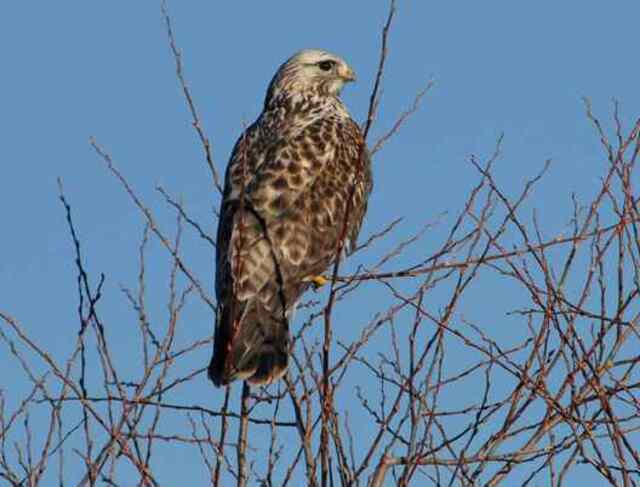Can Hawks Swim? Prepare to dive into the captivating world of hawks as we unravel their surprising aquatic prowess. Known for their hunting prowess and impressive adaptations, these birds of prey have a hidden talent for swimming.
Join us as we explore their anatomy, behavior, and the challenges they face in aquatic environments.
Discover the untold secrets of hawks’ swimming abilities and gain a deeper understanding of their remarkable adaptability. Get ready to make a splash with fascinating insights into the aquatic world of hawks!
Table of Contents
- 1 Key Takeaways
- 2 Can Hawks Swim?
- 3 Overview of Hawks and Their Hunting Abilities
- 4 Anatomy of Hawks
- 5 Hawks and Water Environments
- 6 Swimming Techniques
- 7 Benefits of Swimming for Hawks
- 8 Challenges of Swimming for Hawks
- 9 Comparison to Other Birds
- 10 Frequently Asked Questions
- 11 Conclusion and Implications
- 12 Author
Key Takeaways
- Hawks have not evolved as advanced swimming adaptations as waterfowl and seabirds, but they can swim and move effectively through water.
- Larger hawks tend to be more adept at swimming due to their increased buoyancy, and utilize a combination of wing flapping and paddling with their feet to navigate in water.
- Swimming can provide numerous advantages for hawks, including improving their physical fitness and developing their hunting skills, but it also presents challenges and risks for them.
- Understanding the mechanics behind a hawk’s swimming capabilities is crucial in comprehending their adaptive capabilities and furthering our understanding of avian physiology.
Can Hawks Swim?
Yes, hawks can swim, although it is not their preferred mode of locomotion. Hawks have the ability to paddle and float on water surfaces if necessary, but they are not built for long-distance swimming.
Their adaptations for flying and hunting make them more suited for aerial pursuits rather than aquatic activities.
While hawks can manage short swimming distances, their primary domain remains the skies, where they showcase their remarkable aerial skills.
Overview of Hawks and Their Hunting Abilities
Hawks are renowned for their exceptional hunting abilities, which are primarily attributed to their keen eyesight, powerful talons, and nimble flying skills.
These birds of prey have evolved a variety of hunting strategies to capture prey, depending on their environment and the type of prey they seek.
For example, some hawks hunt from a perch, waiting for prey to pass by before swooping down with lightning-fast speed to snatch them up with their sharp talons.
Other hawks hunt on the wing, using their incredible flying skills to chase down prey in midair.
To adapt to different environments, hawks have also developed specific adaptations for hunting, such as the long, slender bodies of Buteos that allow them to soar for hours on thermal currents, or the sharp, hooked beaks of Accipiters that enable them to tear apart their prey with ease.
Understanding the anatomy of hawks is essential in comprehending the intricacies of their hunting strategies.
Anatomy of Hawks
The streamlined body of these birds of prey is well-suited for fast and agile flight through the air. However, when it comes to swimming, hawks are not as well-adapted.
Their feathers are not designed to repel water, and their talons are not ideal for swimming.
Despite this, hawks can still float on water due to their buoyancy, which is aided by their lightweight bones.
Additionally, hawks have adaptations for both aerial and aquatic environments. Their wings are designed for efficient flight in the air, while their sharp beaks and talons are adapted for hunting in water.
These adaptations suggest that while hawks may not be natural swimmers, they are still able to navigate and survive in water environments. This leads us to the next section about hawks and water environments.
Hawks and Water Environments
Observations of hawks swimming in water environments have been documented, revealing their ability to navigate and move effectively through water.
This ability can be attributed to several factors, including the size and shape of their bodies, the density of their feathers, and their powerful wings.
Understanding the mechanisms behind hawk swimming can shed light on their adaptive capabilities and further our understanding of avian physiology.
Observations of Hawks Swimming
Through careful examination of their behavior in water, it has been observed that hawks are capable of swimming.
Although hawks are not typically associated with water environments, they have been known to dive into bodies of water to catch fish or other prey.
When submerged, hawks use their wings to help them move through the water, and they can stay afloat for several minutes.
While they are not natural swimmers like ducks or geese, hawks have adapted to swimming in order to survive in their environment.
Factors that contribute to their ability to swim will be discussed in the subsequent section.
Factors That Contribute to Their Ability to Swim
By examining the behavior of these avian predators in aquatic environments, several environmental and physical factors have been identified as contributing to their proficiency in navigating through water.
Factors such as body size, wing shape, and plumage density all play a role in determining a hawk’s ability to swim.
Larger hawks tend to be more adept at swimming due to their increased buoyancy, while hawks with wider wings and denser plumage are able to generate more lift and minimize drag in the water.
Additionally, hawks that regularly hunt in aquatic environments have been observed to be more skilled swimmers, suggesting that experience and practice also play a role in their swimming abilities.
Understanding these factors is crucial in comprehending the mechanics behind a hawk’s swimming capabilities.
The following section will explore the specific swimming techniques utilized by these birds, building upon the foundational knowledge of the environmental and physical factors that contribute to their proficiency in navigating through water.
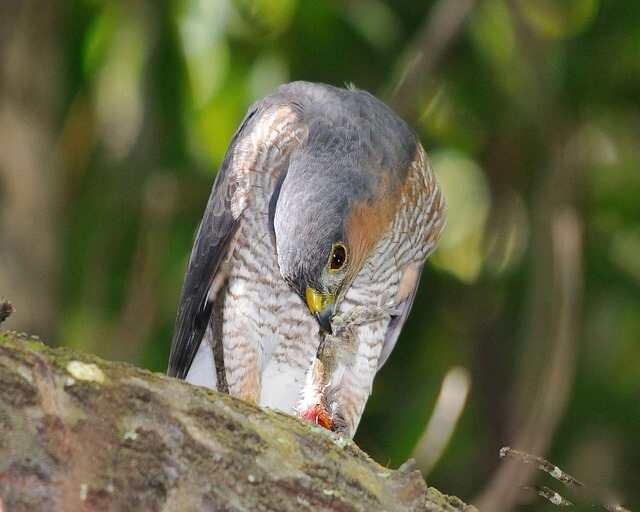
Swimming Techniques
Hawks are known for their aerial agility, but they are also capable of swimming when necessary.
To navigate in water, hawks utilize a combination of wing flapping and paddling with their feet.
In addition, some species of hawks are capable of diving and surfacing to catch prey in aquatic environments.
Wing Flapping
During wing flapping, avian species use their pectoral and supracoracoideus muscles to generate the necessary lift and thrust to propel themselves forward.
Flapping mechanics and the aerodynamics of wings are crucial components of successful flight, as it allows birds to efficiently navigate through the air.
Hawks, like other birds, are capable of flapping their wings to stay in the air and maneuver through different environments.
However, flapping alone may not be enough when it comes to swimming. Hawks may need to engage in other techniques, such as paddling with their feet, to stay afloat in water.
Paddling with Feet
The use of additional techniques, such as foot paddling, is necessary for avian species to stay afloat in water. Hawks, like other birds, have adapted to water resistance by using their feet to paddle and stay afloat.
This technique involves pushing water backwards with their feet while keeping their body buoyant. Through this water resistance adaptation, hawks can keep themselves afloat and move in water.
To better understand the mechanics of this technique, a table is provided below that illustrates the different foot paddling techniques used by different avian species.
Understanding these techniques is crucial in comprehending how different birds manage to stay afloat in water.
Through these adaptations, hawks and other birds can successfully navigate in water environments. Next, we will explore how birds dive and surface in water.
Diving and Surfacing
In addition to paddling with their feet, hawks are also capable of diving and surfacing in water. These birds of prey use their powerful wings to propel themselves underwater while holding their breath.
During the dive, hawks use their buoyancy control to manage their depth and navigate through the water. They also utilize their sharp talons to catch fish and other prey while underwater.
However, the main challenge hawks face when swimming is water resistance, as their feathers are not as streamlined as those of aquatic birds. Despite this, hawks are still able to swim and hunt effectively in water.
With this knowledge about hawks’ swimming abilities, we can now explore the benefits of swimming for these birds of prey.
Benefits of Swimming for Hawks
Swimming can provide numerous advantages for hawks, including improving their physical fitness and developing their hunting skills. As natural predators, hawks need to maintain their agility in order to be successful hunters.
Swimming can help them to build strength in their wings and legs, and improve their overall stamina.
Additionally, swimming can help them to develop their hunting techniques, as they learn to navigate the water and catch prey that may be swimming or diving.
However, swimming also presents a number of challenges for hawks, including the risk of getting trapped in the water or becoming prey for larger predators.
Despite these challenges, hawks can benefit greatly from swimming, and it is an important part of their overall fitness routine.
Challenges of Swimming for Hawks
Navigating water presents a variety of obstacles for birds of prey looking to maintain their physical fitness.
Swimming adaptations for hawks are not as advanced as those of waterfowl and seabirds, which are specifically designed for aquatic environments.
Hawks have evolved to be aerial hunters, with their wing structure and musculature being optimized for flight, not swimming.
This presents a challenge for hawks that need to dive into water to catch prey or cool off on hot days.
Additionally, the feathers of a hawk’s wings and body can become waterlogged, making it difficult for them to take flight and escape predators.
Finally, predatory challenges in the water such as currents, waves, and other marine life can present a significant obstacle for hawks.
Despite these challenges, hawks have developed some swimming adaptations such as a streamlined body shape, partially webbed feet, and the ability to paddle with their wings.
These adaptations help hawks to navigate water, but they are not as efficient as those of other water birds.
In the next section, we will compare the swimming abilities of hawks to those of other birds.
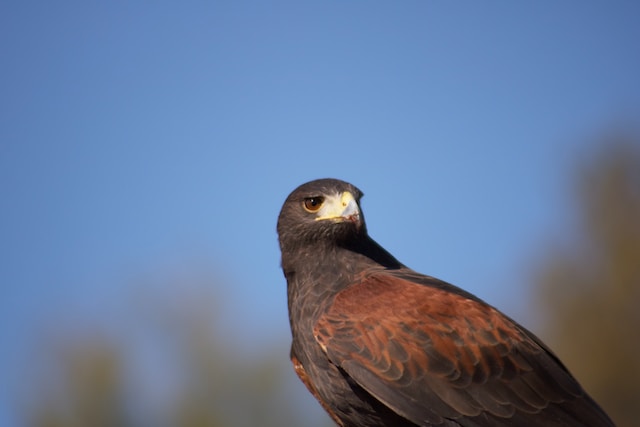
Comparison to Other Birds
When it comes to swimming, different bird species have varying levels of proficiency. Waterfowl and seabirds, for instance, are well-adapted to aquatic environments and have specialized physical features that make them efficient swimmers.
On the other hand, raptors and birds of prey are not as well-suited for swimming due to their morphology and hunting strategies, but some species have been known to swim short distances when necessary.
A comparison of these different bird groups sheds light on the diverse adaptations that have evolved in response to different ecological niches.
Waterfowl and Seabirds
Waterfowl and seabirds are fascinating creatures that have adapted to living in and around water. These birds have evolved unique adaptations to help them survive in aquatic environments, such as waterproof feathers, webbed feet, and specialized beaks for catching fish and other prey.
Some of the most interesting adaptations include the following:
1) Penguins have a layer of fat to keep them warm in cold water,
2) Pelicans have a throat pouch that they use to scoop up fish,
3) Gulls have a unique digestive system that allows them to drink salt water, and
4) Cormorants have the ability to dive deep underwater and stay submerged for long periods of time.
These aquatic foraging strategies and adaptations are crucial for the survival of waterfowl and seabirds. Moving forward, it is important to explore how raptors and birds of prey have adapted to life in the air.
Raptors and Birds of Prey
Raptors and birds of prey have evolved unique characteristics and behaviors to hunt and capture their prey, similar to skilled hunters stalking their prey in the wild.
Their behavior is marked by their ability to fly high and fast, and their sharp talons and beaks enable them to catch and kill smaller birds and mammals.
However, despite their aerial hunting prowess, birds of prey have also developed aquatic adaptations that allow them to swim and hunt in water, such as the osprey, which can dive up to 100 feet into water to catch fish.
Additionally, some raptors have been observed wading in shallow water to capture prey, further demonstrating their adaptive abilities.
These aquatic adaptations have allowed birds of prey to expand their hunting range and take advantage of new food sources.
Ultimately, understanding the behavior and adaptations of birds of prey can provide insights into the complex interactions between predators and prey in the natural world.
Frequently Asked Questions
How long can a hawk stay underwater?
The depth of a hawk’s dive is limited by their respiratory system. While underwater, their body employs a mechanism that slows down their heart rate to conserve oxygen. However, hawks cannot stay underwater for prolonged periods, limiting their ability to hunt underwater prey.
Do hawks swim for fun or just for survival?
Hawks swimming can be both a leisurely activity and a survival technique. Their physiology allows them to swim for short distances, but it is not their preferred method of movement. Hawks are known for their impressive aerial abilities, which aligns with their desire for freedom.
Can all species of hawks swim, or just certain ones?
Hawks have adapted to their habitat preferences and hunting techniques, which include flying and perching. Although some species may be able to swim, it is not a common behavior observed in the wild.
Are hawks able to catch fish while swimming?
Hawks can hunt in water, utilizing various fish catching techniques. They can snatch fish from the surface or dive underwater to grab prey. Their ability to catch fish while swimming varies among species.
How does a hawk’s swimming ability compare to that of a duck or a swan?
The Evolution of Hawk’s Swimming Ability: A Comparative Analysis between hawks and ducks reveals that ducks are better swimmers due to their webbed feet, waterproof feathers, and streamlined bodies. However, hawks can swim if necessary, but are not adapted for it.
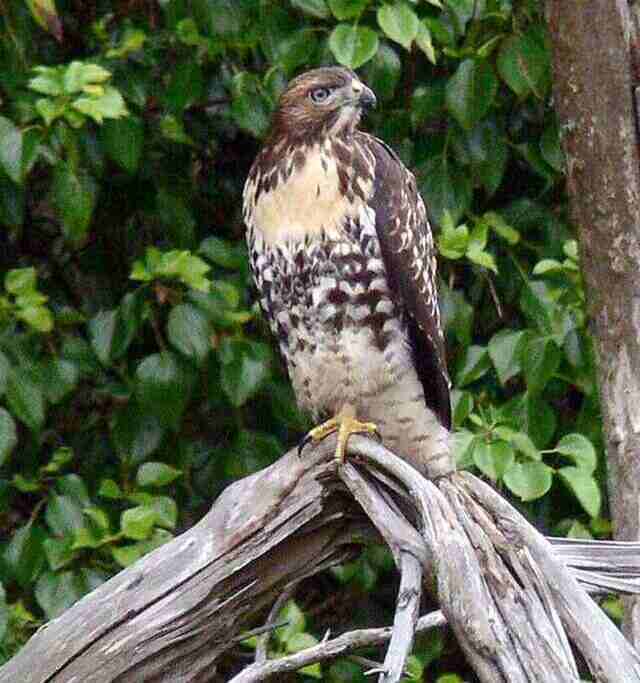
Conclusion and Implications
Therefore, it can be concluded that the ability of hawks to swim is limited, and they are not well adapted to aquatic environments, which has implications for their survival and hunting strategies in certain habitats.
While hawks are excellent aerial hunters, they are not designed to be proficient swimmers. Their feathers are not waterproof, which makes it difficult for them to stay afloat and move efficiently through water.
In addition, their talons are not adapted for catching prey in water, as they are designed for grasping and killing prey on land.
These limitations have implications for hawks’ hunting strategies in habitats near bodies of water, where prey may be aquatic or require swimming to catch.
While hawks may be able to catch some aquatic prey, such as fish or amphibians, they are at a disadvantage compared to birds that are adapted to aquatic environments.
This highlights the importance of understanding the adaptations and limitations of different bird species in their respective habitats.
| Benefits | Limitations | Implications |
|---|---|---|
| Excellent aerial hunters | Limited ability to swim | Difficulty catching aquatic prey |
| Efficient at catching prey on land | Feathers not waterproof | Disadvantage in habitats near water |
| Adapted for grasping and killing prey | Talons not adapted for catching prey in water | Importance of understanding adaptations in respective habitats |

